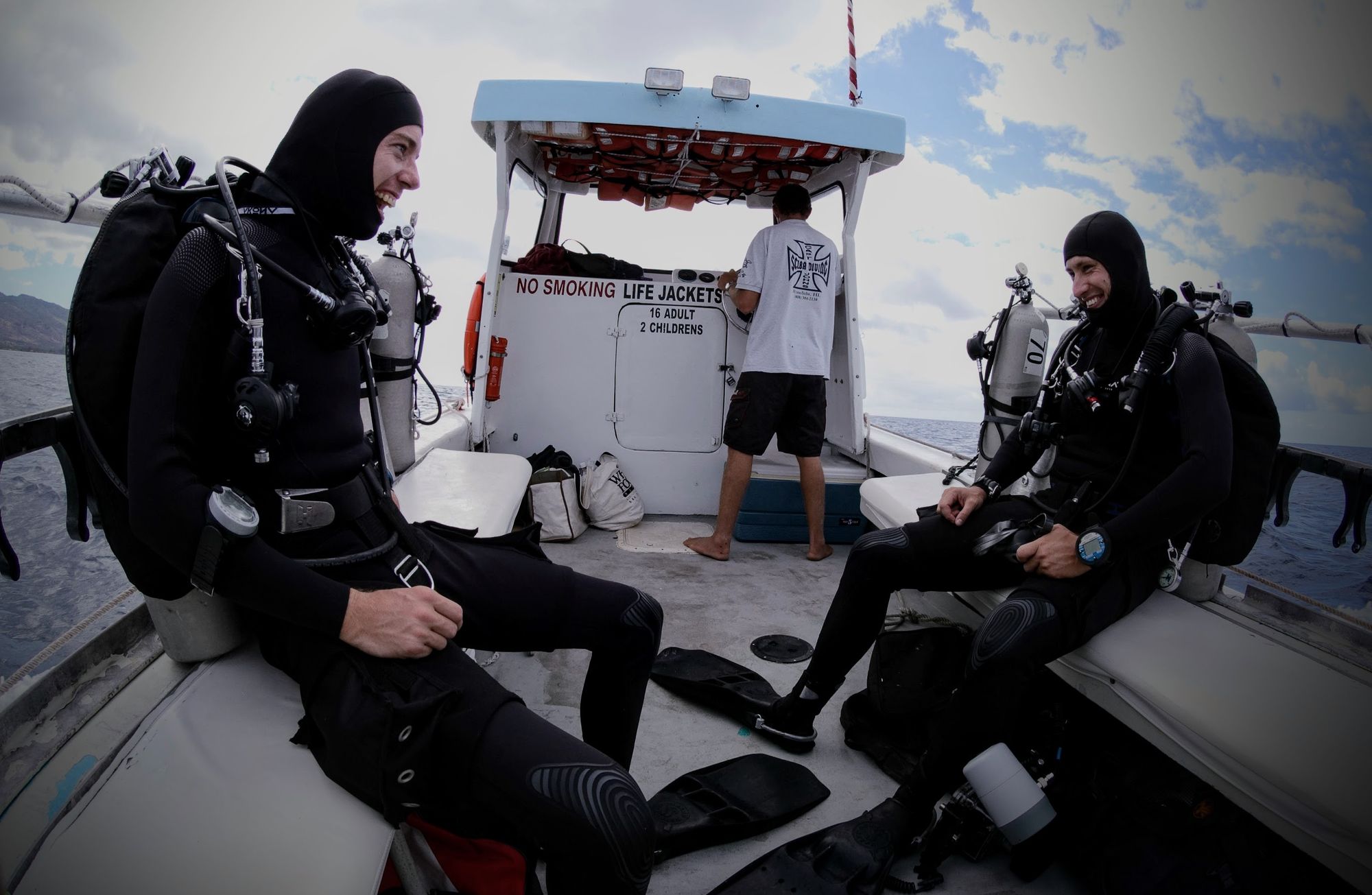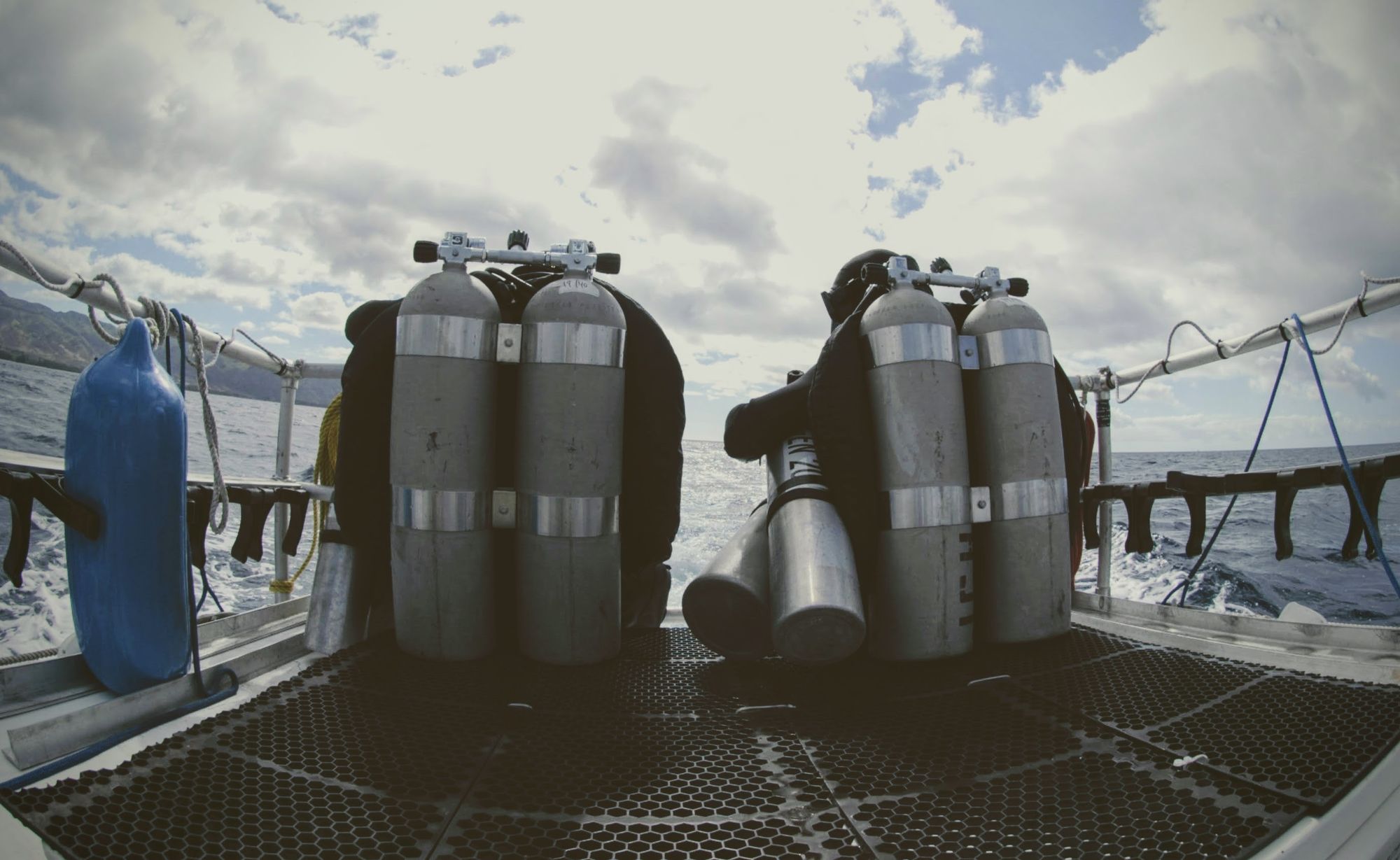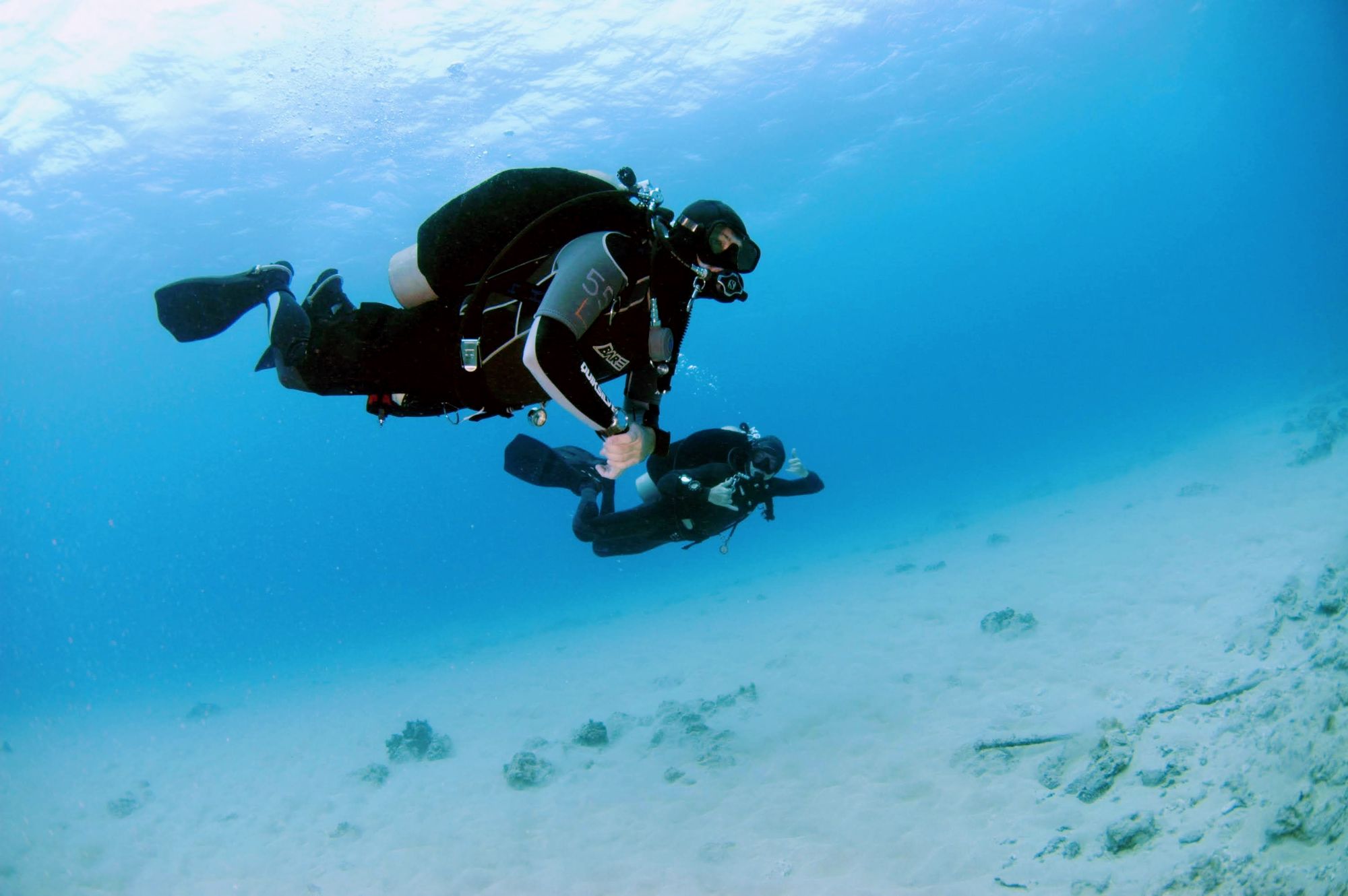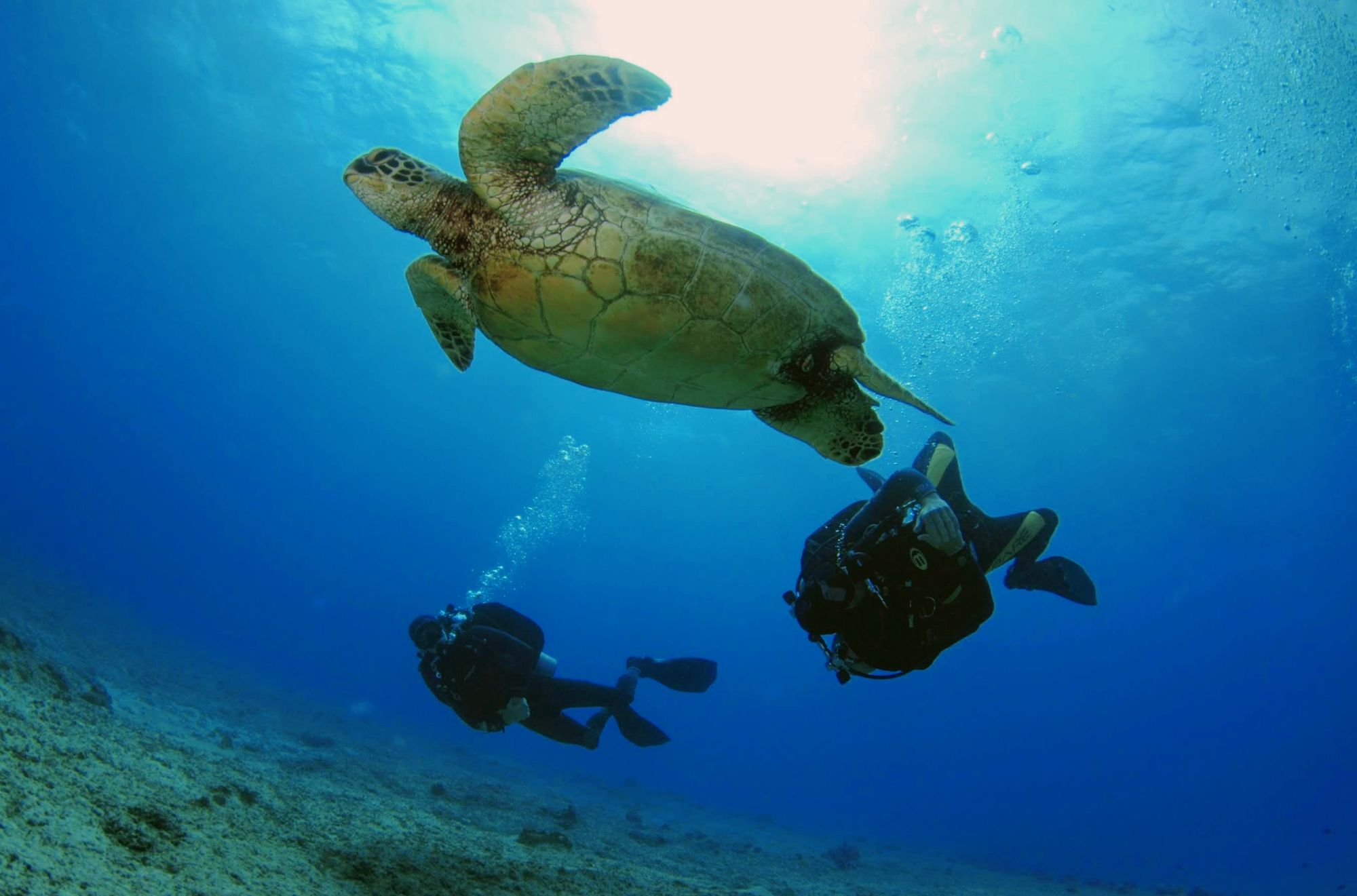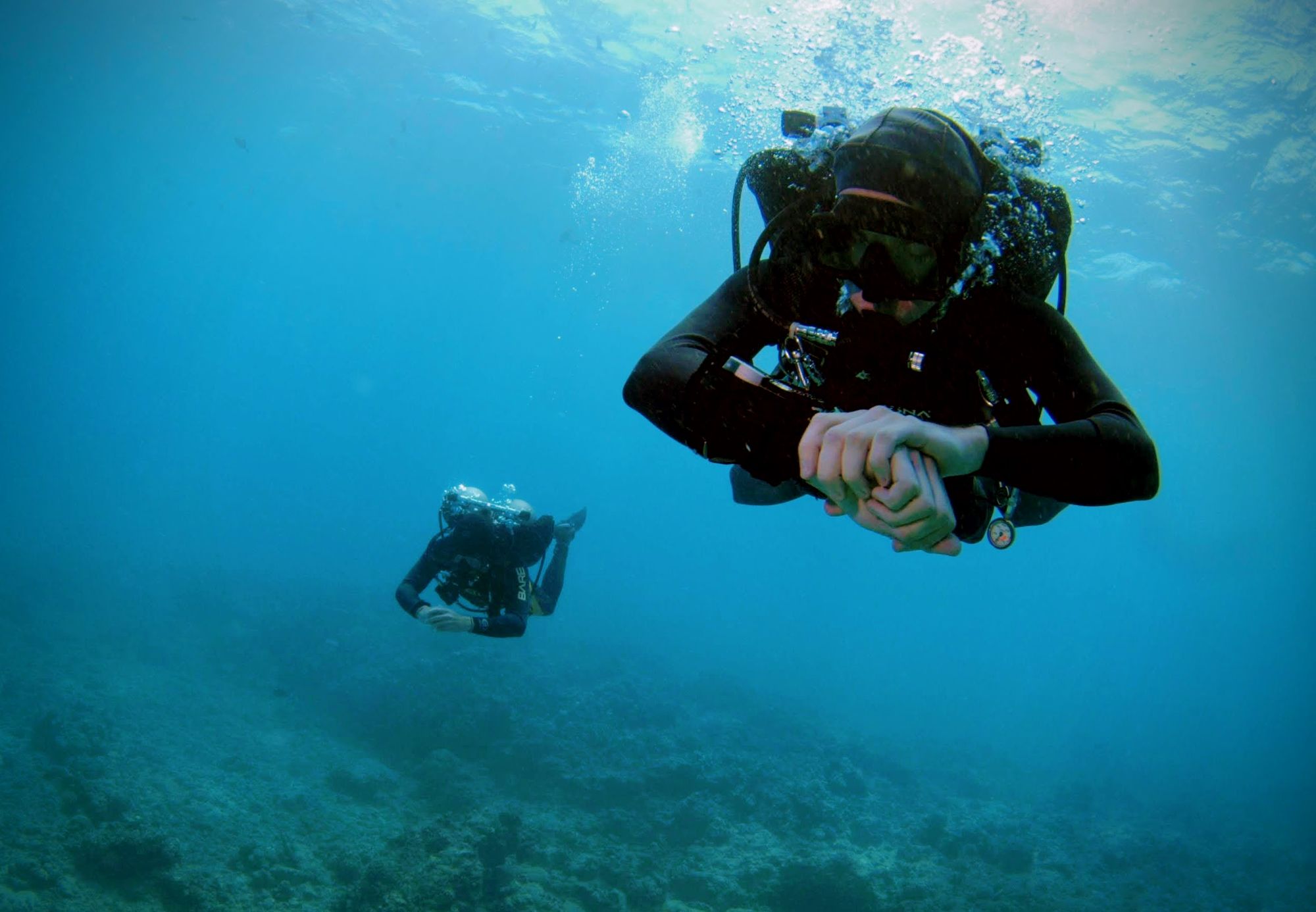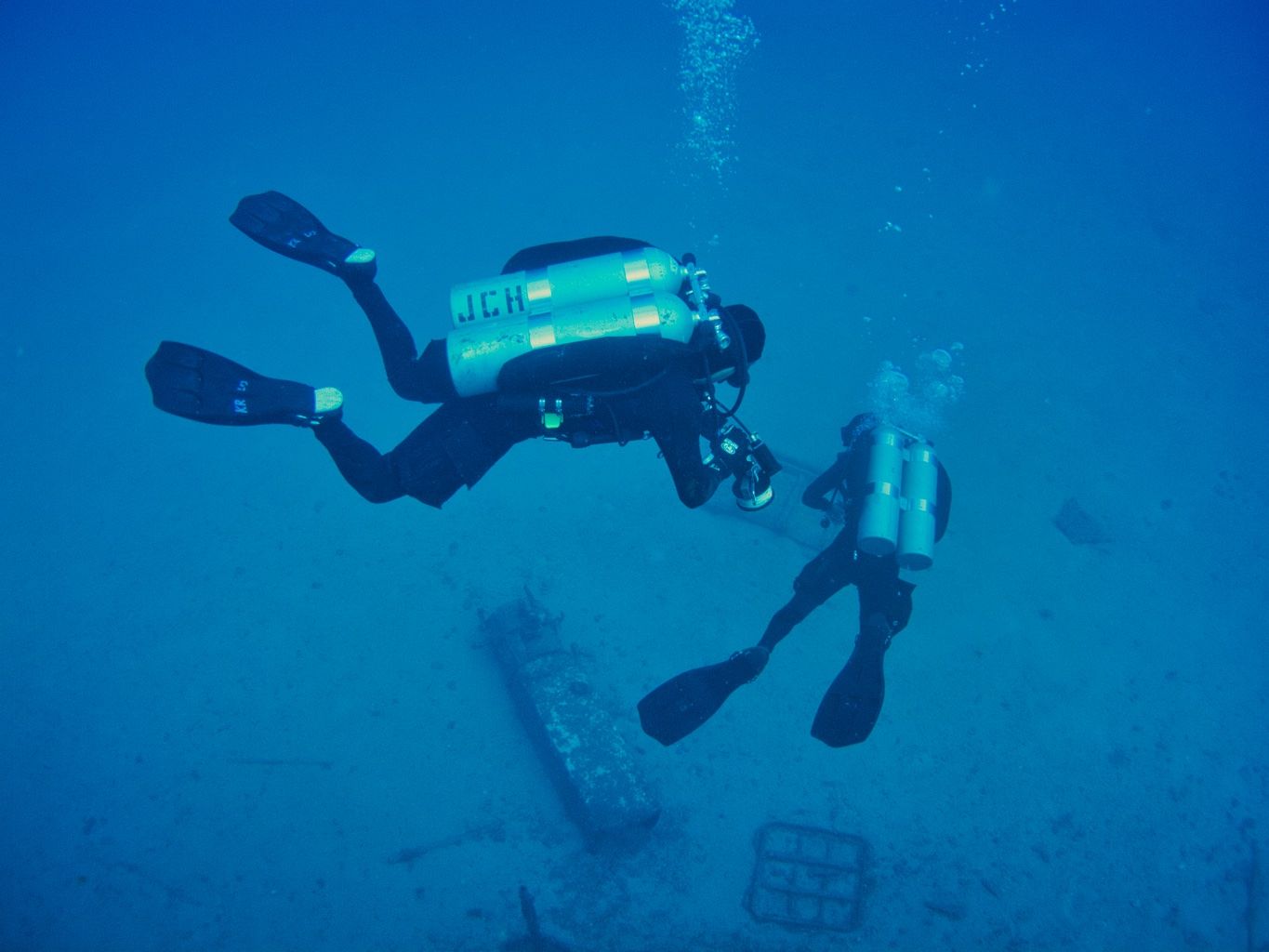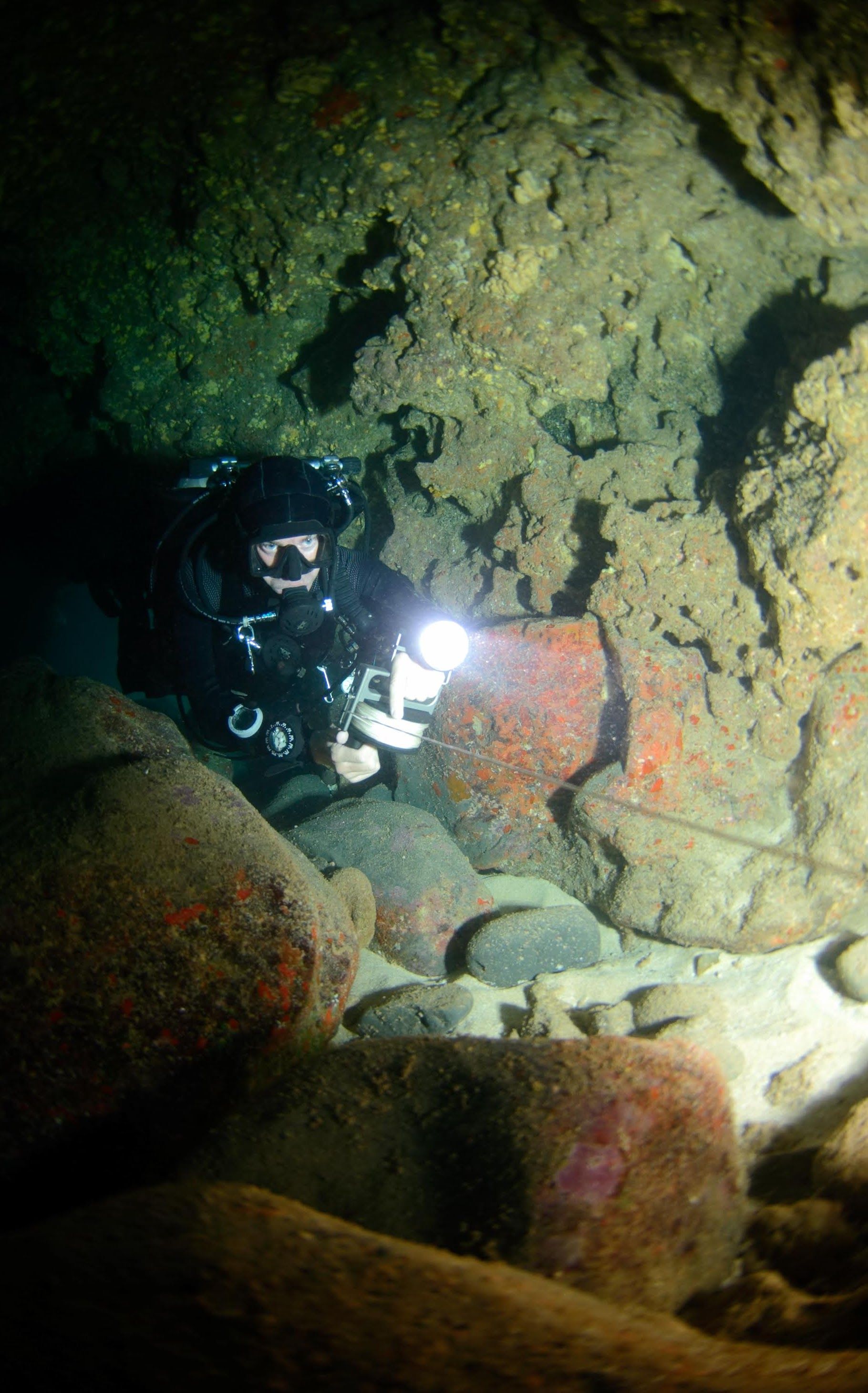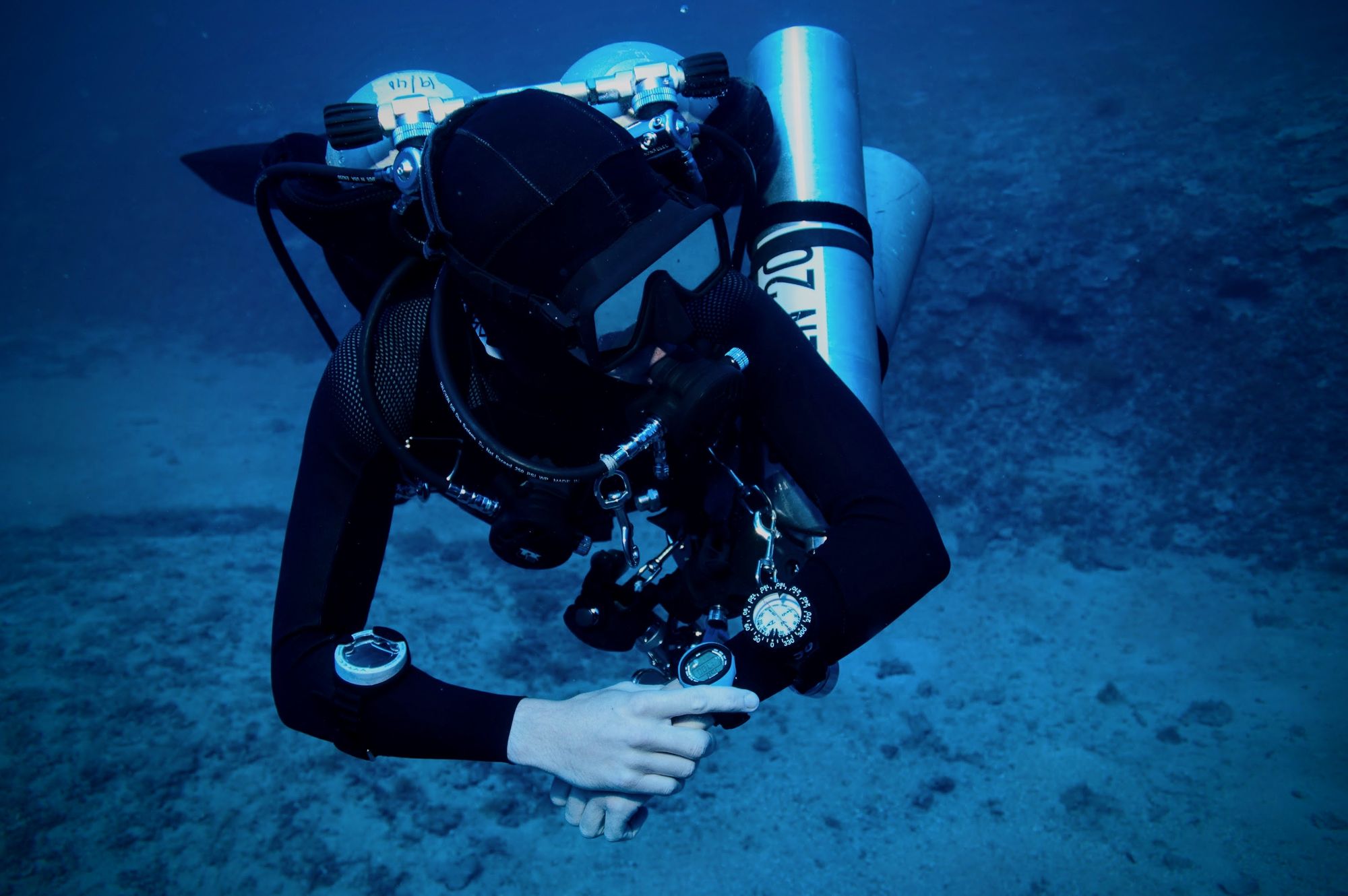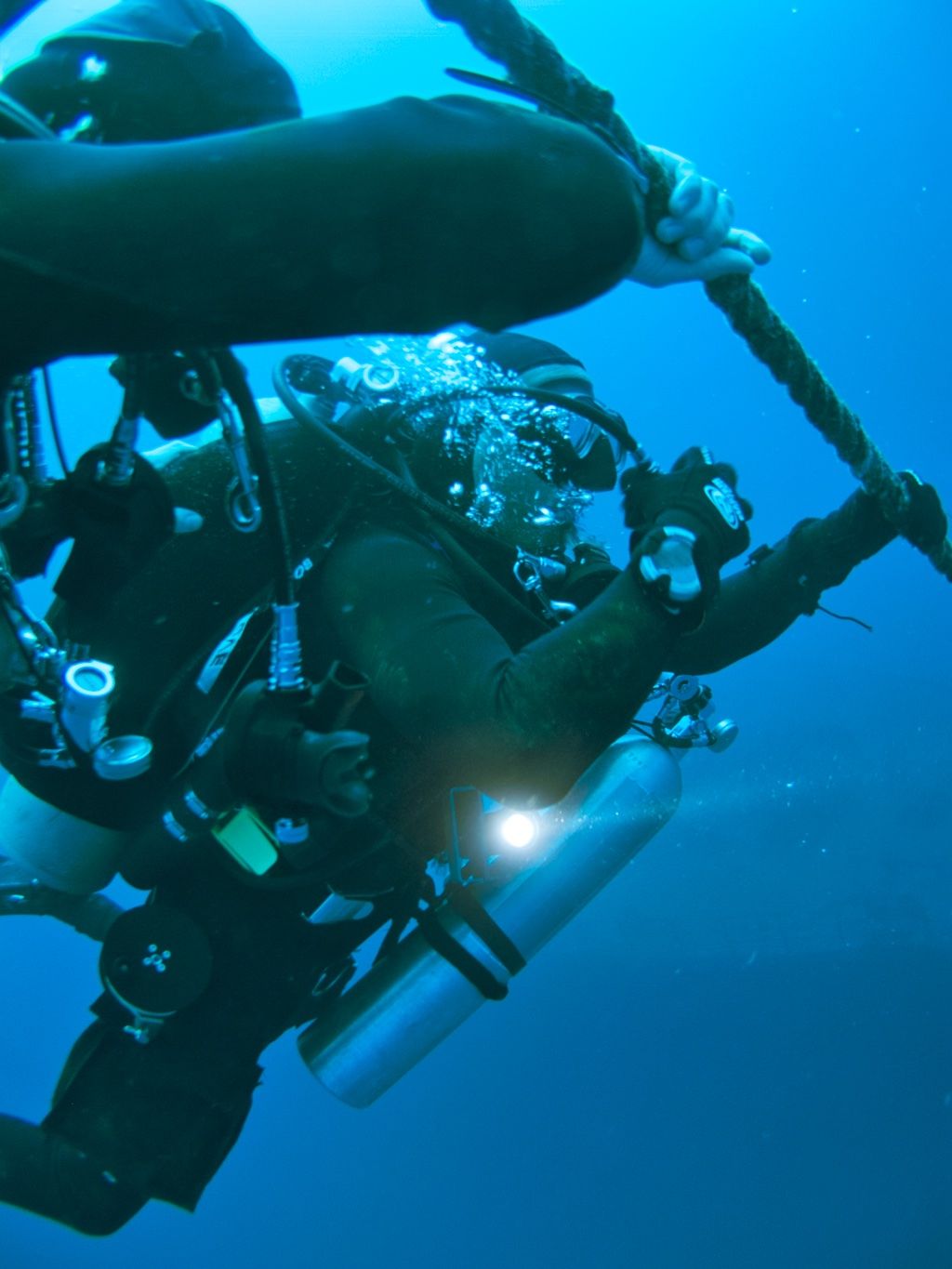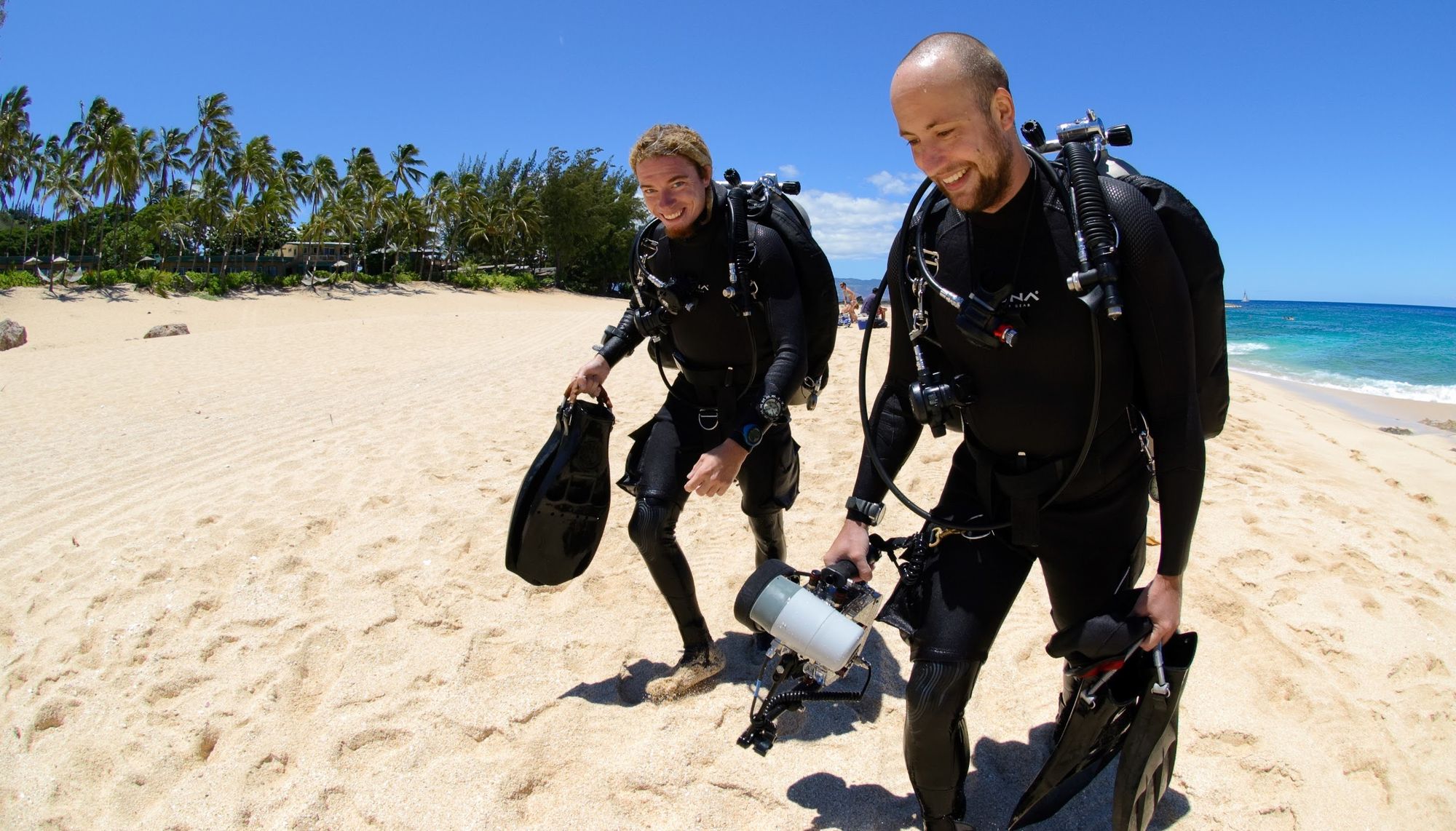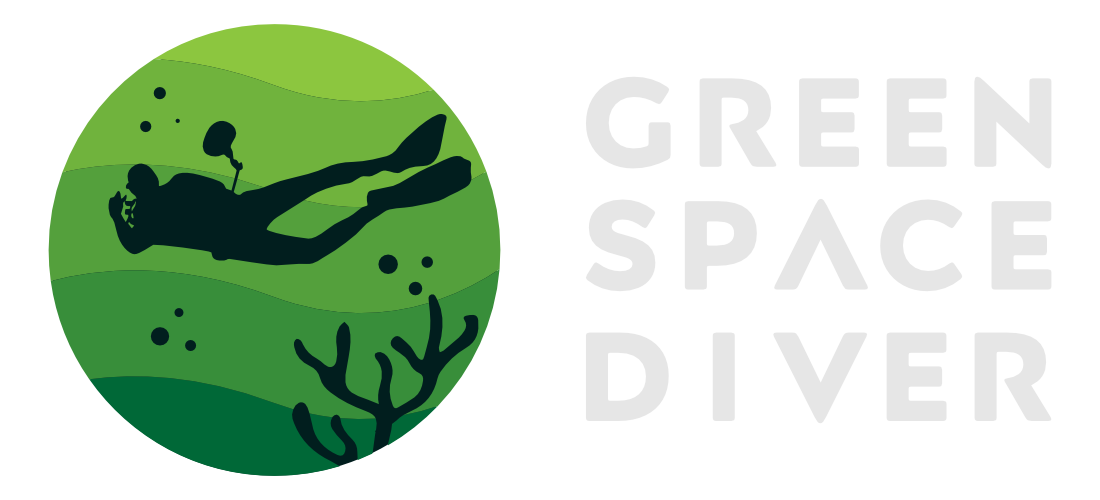Hawaii Technical Diving Training
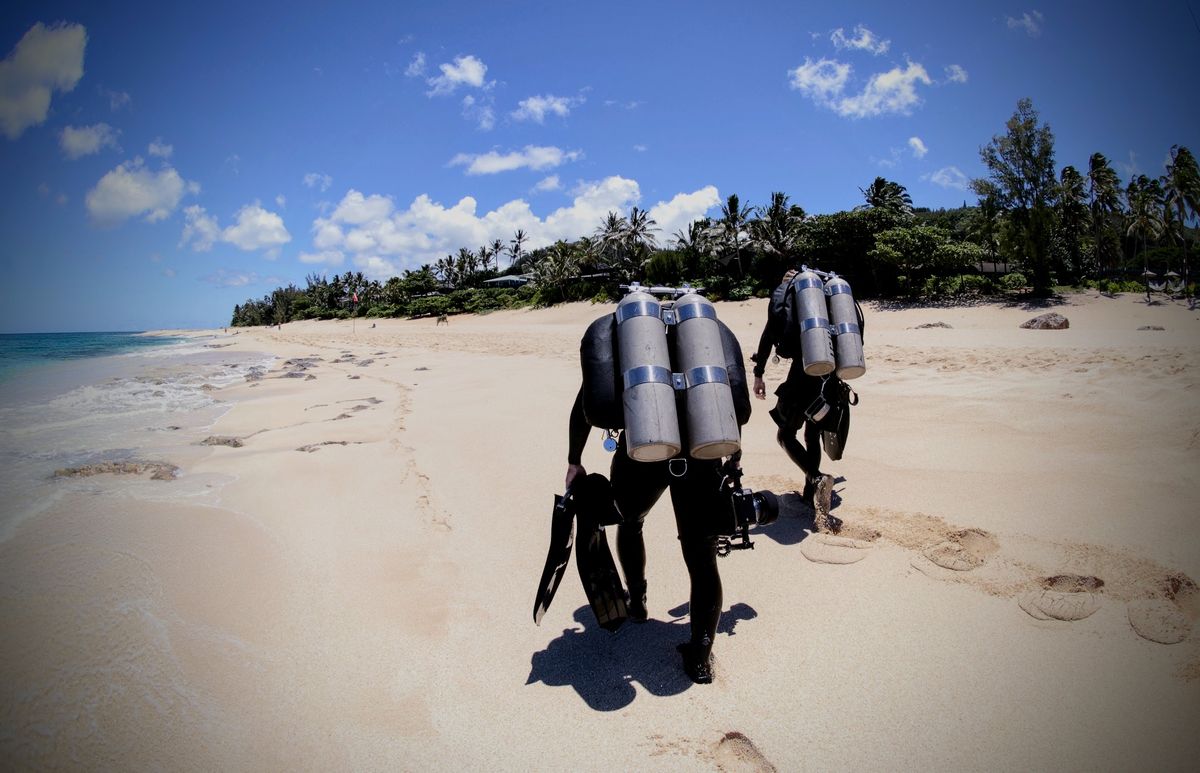
In 2005 I did my initial technical dive training in Hawaii and I think I was one of the first member of HaTeD - Hawaii Technical Divers. I had wanted to get into technical diving for quite a while, but technical dive training was in its infancy in Hawaii at the time, and as a student I couldn't afford it anyway. But when my colleague and friend became a technical instructor with TDI, I finally had the opportunity during my last year in Hawaii.
The Courses
During 2005 I did the following courses:
- GUE Fundamentals
- TDI Decompression Procedures
- TDI Advanced Nitrox
- TDI Helium Diver
We also did quite a bit of wreck and cave penetration practice dives.
The Instructor
Joakim Hjelm was, like me, a student at Hawaii Pacific University and we worked together at Island Divers Hawaii. Cool, calm and collected... and with a wicked set of dreads, would be a good description I think. Never a dull moment, above or below water.
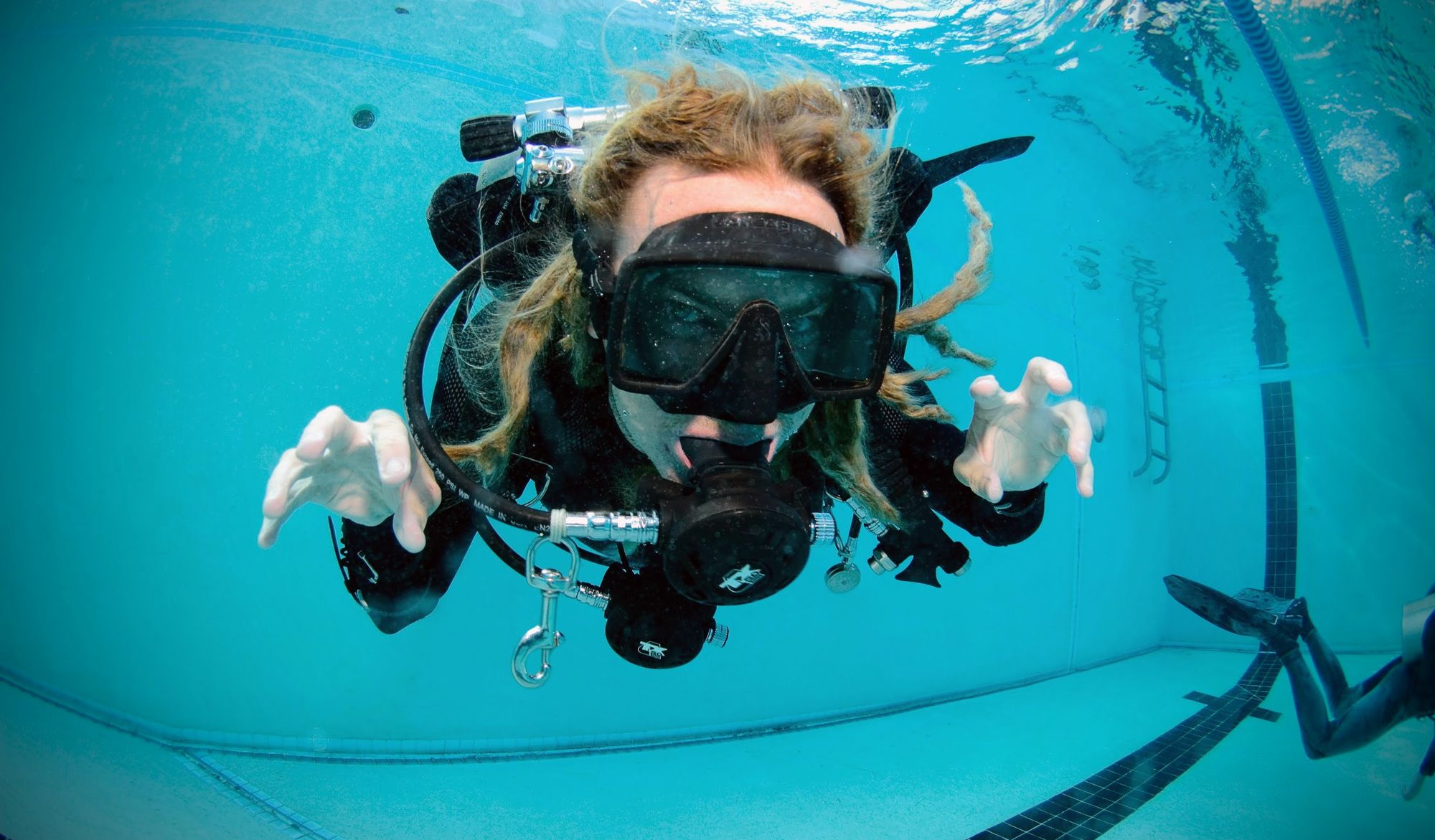
Pool Sessions
The classes where done through Island Divers Hawaii, which had some fantastic facilities at Hickam Airforce Base, just outside of Honolulu. We spent a lot of time in the full-size pool perfecting our skills, especially the basics such as fin techniques and trim.
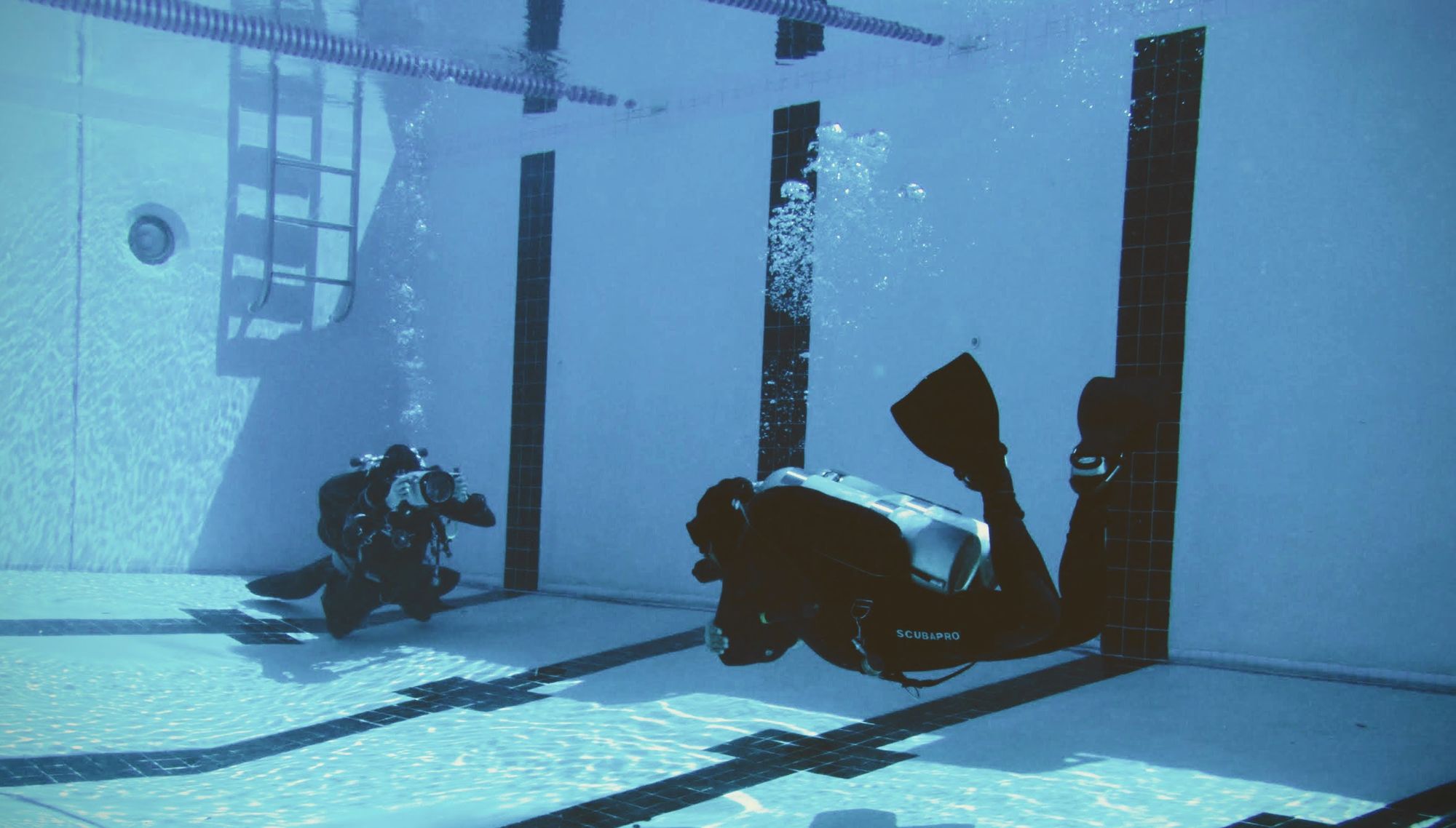
Skill Dives
We took advantage of having easy access to shallow reefs on the south shore of Oahu and practiced all required skills many times over. We particularly focused on stage handling, out-of-gas drills and ascents.
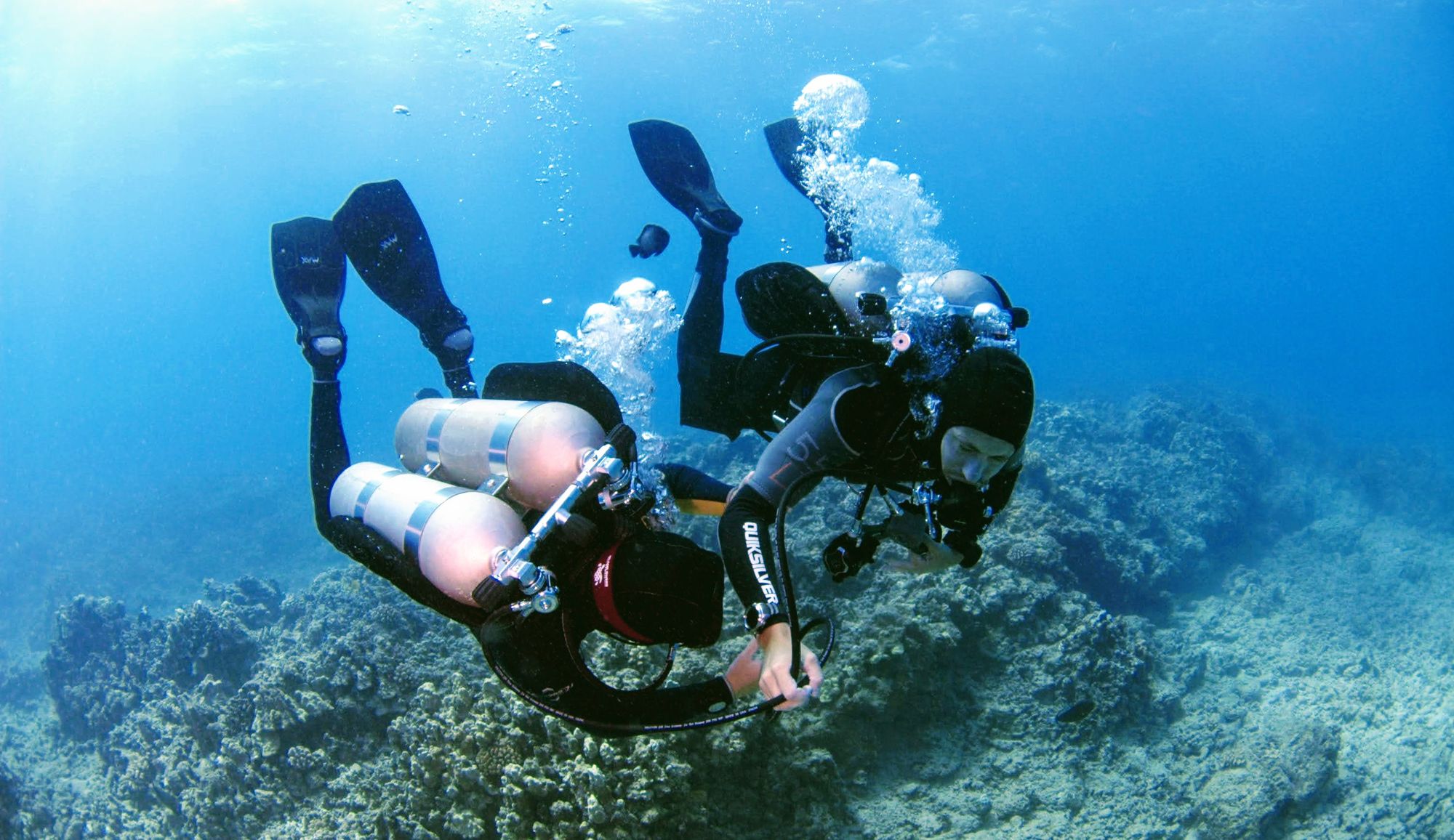
Experience Dives
Dive Planning
As Joakim knew he wanted to become a GUE instructor we planned our dives using their methods, e.g. ratio deco and rock bottom calculations. There weren't many trimix computers around at this time, and no smart phones or tablets, so it was very convenient calculating deco on the fly using simple bottom timers. However, we did check against tables generated by V-Planner.
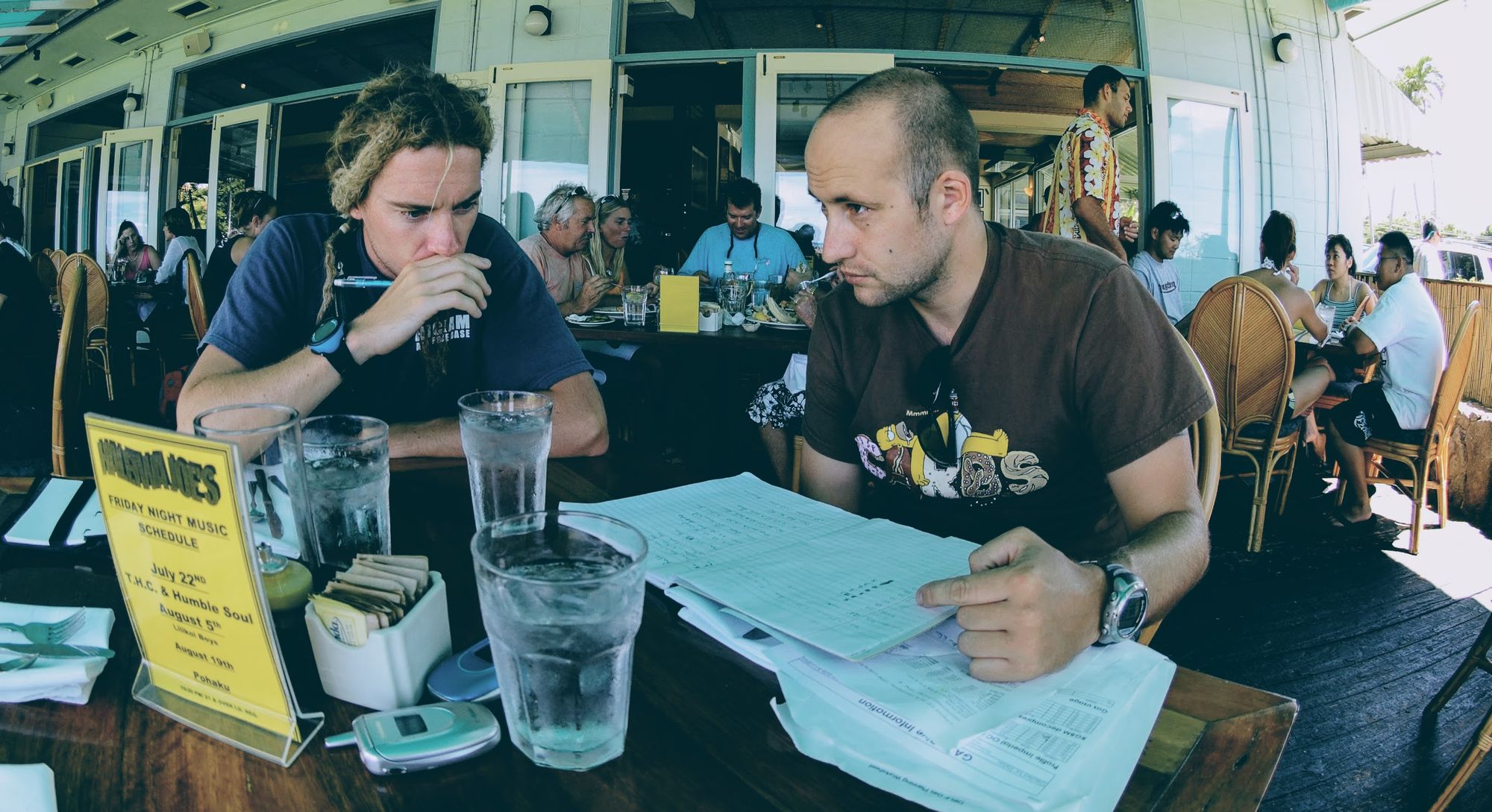
Open Ocean
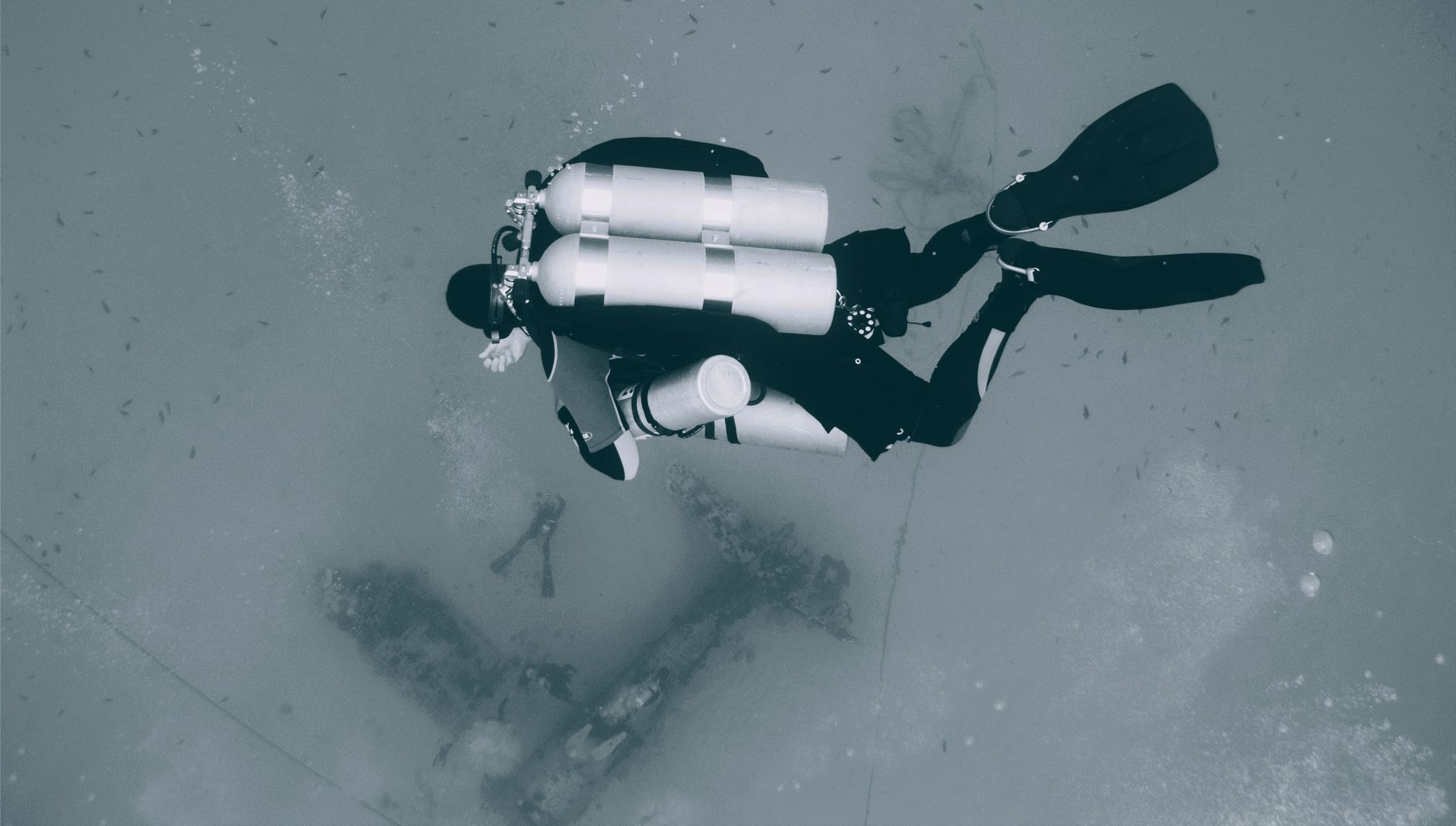
Cave
The only proper cave we could find was at Shark's Cove. When ocean is flat it's possible to squeeze far enough in to loose any sight of daylight. It was a fun cave to practice in. The rocks are quite sharp and in some places you can barely get through with backmounted tanks.
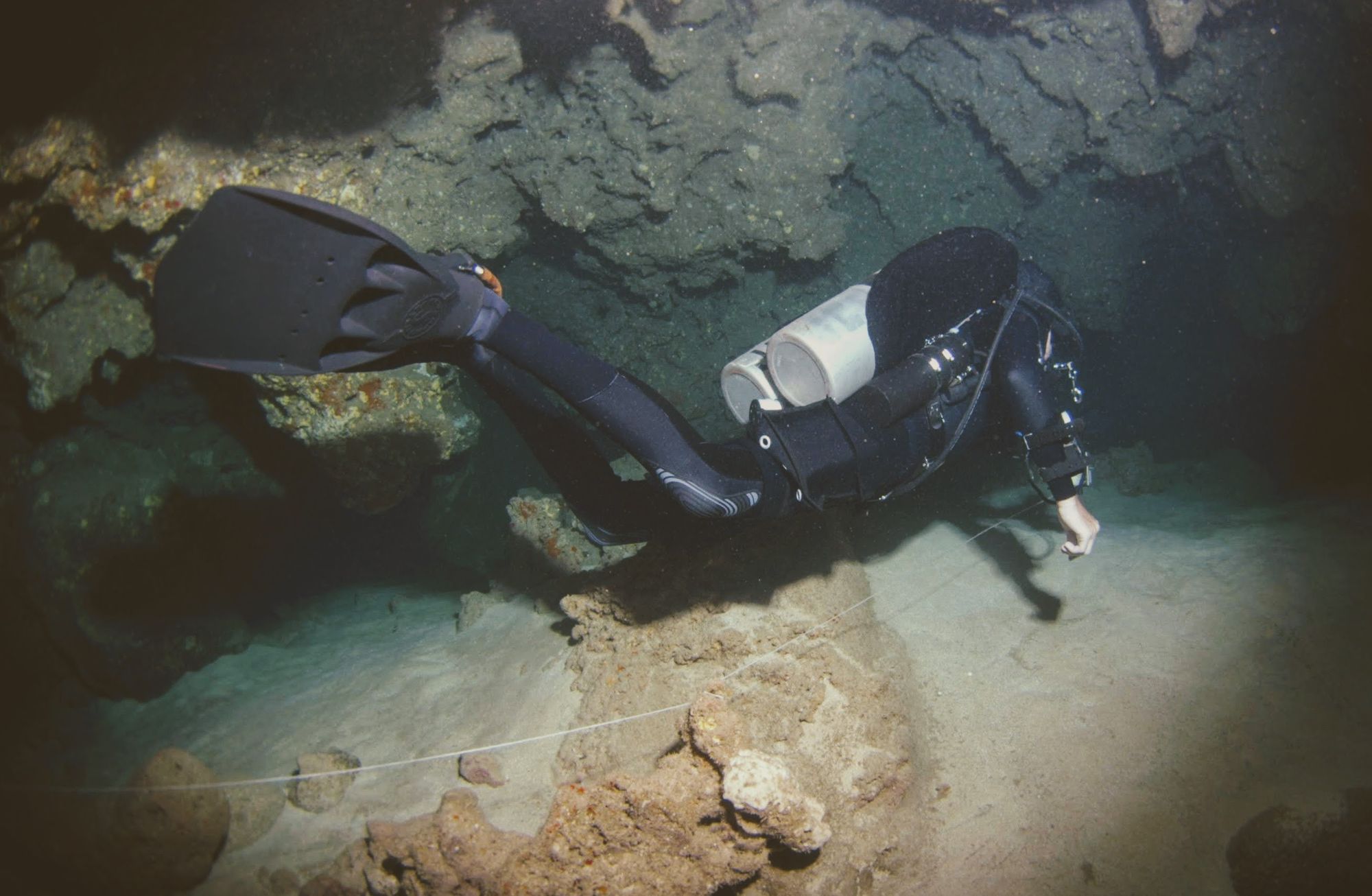
Wreck
Our go-to wreck for classes and practicing wreck diving was the Sea Tiger. It's an amazing wreck for this purpose with a lot of penetration opportunities ranging from swim-throughs to complex corridors with lot of debris and cables hanging from roof. Check the separate article for more info and images of the Sea Tiger.
Having done over a 100 dives on this wreck guiding divers, it became really apparent how important it is adding helium to the mix when going beyond 30 meters. With helium I noticed things about the wreck I had never seen or thought of before.
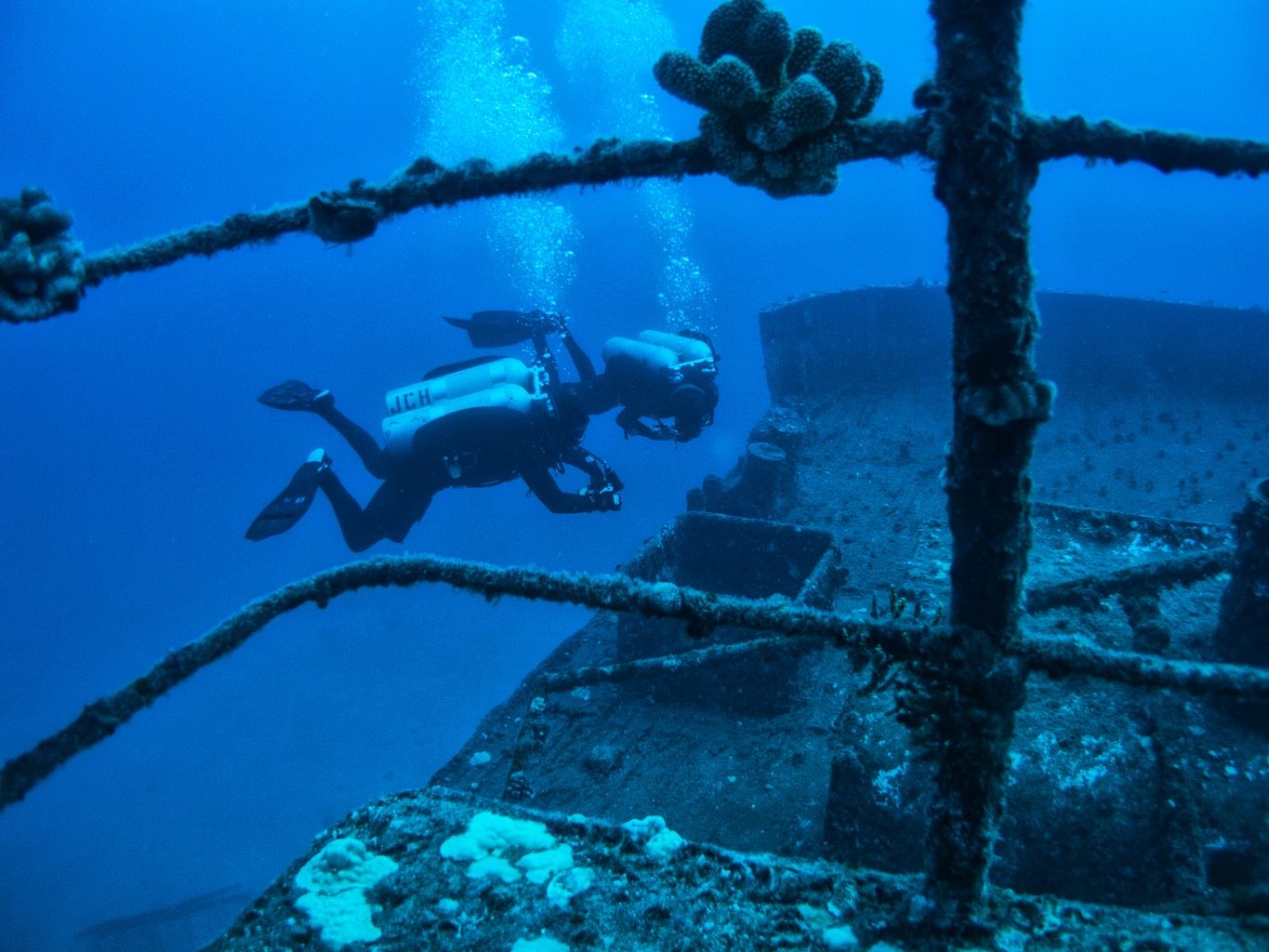
Gallery
